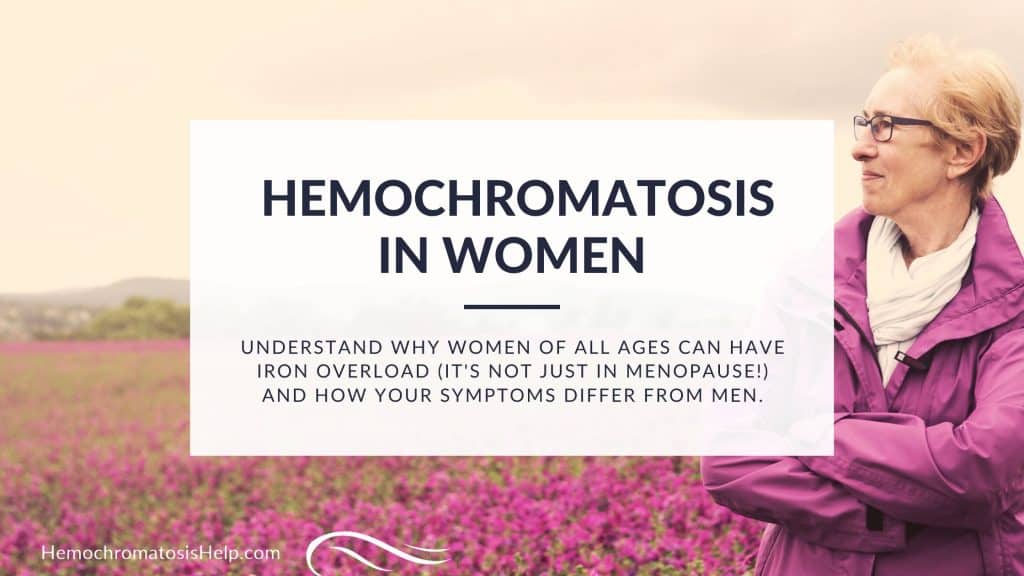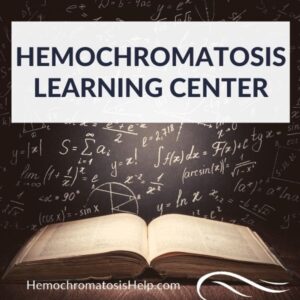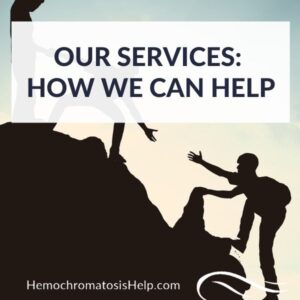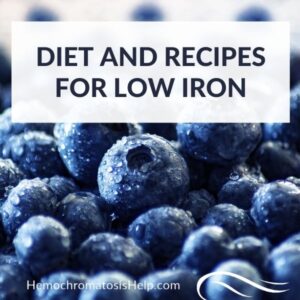How Do Women Experience the Symptoms of Hemochromatosis?
In most health conditions, a woman’s experience may be different from a man.
But what about in hemochromatosis?
Do women even have the same symptoms as men?
Why does it seem like more men are diagnosed than women?
And what about younger women who are still having their periods? Surely they can’t have too much iron in their bodies?
Or can they?
In this article, I will cover these questions and more, and the answers may surprise you!
In This Article
The Frequent Causes of Misdiagnosis of Hemochromatosis in Women
Many of the symptoms experienced by both men and women with hemochromatosis are the same—fatigue, joint pain, weakness, weight loss, and stomach pain. For many people, women and men, the only symptom is a generalized “I don’t feel well.”
But there are some differences.
For example, women are more likely to report feeling “tired” with no other apparent symptoms at first.
Women are also frequently diagnosed around middle age. But what do you think happens when a middle-aged woman confesses to her doctor that she feels tired?
You guessed it.
She is told it must be perimenopause or menopause. She might be put on hormone replacement therapy. She may or may not feel any better, so her doctor may increase her prescription, perhaps adding an anti-depressant since she is still complaining of not feeling well.
All the while, her problem could be related to iron overload!
Do Women Not Develop Hemochromatosis Until Menopause?
There is a common hypothesis that women often develop hemochromatosis symptoms later than men because they have a built-in mechanism for shedding excess iron during their menstrual cycles.
The idea is that men don’t lose blood every month, so they show their symptoms of iron overload way before women. It’s almost as if women have a monthly “natural phlebotomy” that keeps their iron levels from getting too high.
Once they reach menopause, nature’s bloodletting ends, and only then can they start to develop excess iron in their bodies.
This theory is pretty well-established in the medical community, and until I looked into the actual research, I, too, assumed that this was true. WebMD, for example, says:
“Women often don’t show signs of this condition until they’re over 50 or past menopause. That may be because they lose iron when they get their periods and give birth.”
Here’s the problem. Any actual, real evidence I can find that’s been done to look at this issue comes up with a different story.
Fact vs. Fiction about Hemochromatosis and Women
In our naturopathic practice, we’ve worked with multiple women, some in their 20s and 30s, who have iron overload. Their journey to finding a doctor who will listen to them and help them uncover the root cause behind their unexplained symptoms was often long and frustrating.
What does this earlier diagnosis mean for women of childbearing age who wonder how iron overload might impact fertility and pregnancy? I’ve written an entire article discussing this topic of pregnancy and fertility if you want to learn more.
How does their story fit in with the narrative about hemochromatosis mostly being a male or older-woman’s condition?
A study from the Annals of Internal Medicine, exploring how hemochromatosis presents in different genders and different age groups, helps shed some light on this and other common myths.
Let’s explore these myths below!
Myth One: Men Develop Hemochromatosis Symptoms Before Women
First, this study helps answer if women develop hemochromatosis symptoms later in life than men. It found that, on average, women first showed signs at age 50, whereas the men developed symptoms an average of two years earlier, at age 48.
Wait, that’s not really much of a difference, is it? Only two years?
Myth Two: Only Men Get Serious Side-Effects from Iron Overload
Second, it noticed that women were not immune to associated conditions such as diabetes and cirrhosis, which are often considered more “male” presentations of hemochromatosis. The ladies got them too—not as often, but they were not immune.
Myth Three: Young Women Can’t Develop Iron Overload
Third, the researchers noticed that women who stopped menstruating before age 50 were more likely to have iron concentrated in their livers than women who continued having periods until after 50. This matches the original hypothesis that a monthly menstrual cycle reduces total iron build-up in the body.
However. . . .
This study found that while half the women at diagnosis had stopped menstruating, the other half were still menstruating when their hemochromatosis was discovered. Whether a woman was pre- or post-menopausal made no difference in her diagnosis!
If you do the math, this actually shouldn’t be surprising. The average amount of iron lost during an average menstrual period is approximately 1-4 mg a day. The amount of iron lost during the average phlebotomy, in contrast, is 200-250 mg.
One might question whether or not that small amount lost during the menstrual cycle really would delay the onset of hemochromatosis symptoms. As those of you who do regular phlebotomies know, it takes more than one phlebotomy to reduce iron build-up, so a few milligrams once a month is likely to have limited impact.
The Need for Awareness for Iron Overload in Women
The myths exposed by this study makes me pause and wonder about all the women who aren’t being diagnosed, from possibly incorrect assumptions and lack of awareness from their doctors.
As I mentioned above, our small naturopathic office has worked with multiple women who don’t fit the stereotype of who gets hemochromatosis. Young women, vegan women, women without Celtic descent; iron overload can strike even in those who don’t fit the typical presentation.
Healthcare providers need always to keep iron overload in their diagnostic Rolodex as it’s otherwise easy to miss during routine diagnostic tests.
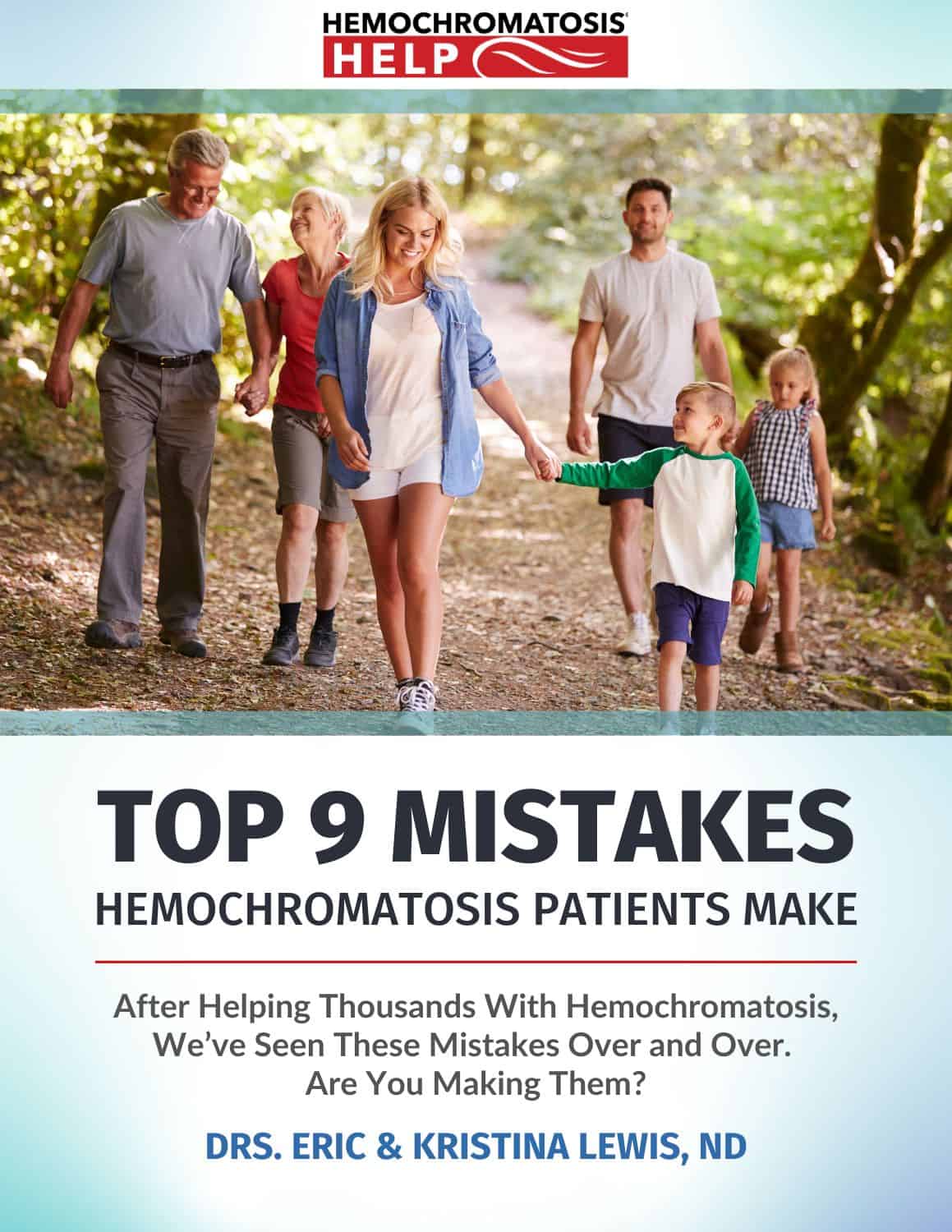
FREE GUIDE: TOP 9 MISTAKES HEMOCHROMATOSIS PATIENTS MAKE
After working with hemochromatosis patients over the past 10 years we have seen these mistakes over and over again including:
- Why when your doctor says “phlebotomy is the only thing you can do” they may not be completely correct
- The real importance of diet and supplementation for those with hemochromatosis
- Why Googling about hemochromatosis is one of the last things we recommend
- And much more…
The Connection Between Osteoporosis and Hemochromatosis
Another interesting finding about iron overload related to women is that too much iron is associated with bone loss (osteopenia and osteoporosis).
This is actually the case for both women and men!
Several studies have looked at women and men with the HFE gene mutation. They have shown that iron overload individuals with normal vitamin D levels and other markers that usually indicate bone health may have significant bone loss.
Which takes us back to our original problem of misdiagnosis. Remember our fatigued, middle-aged women at the beginning of this article? Well, now she also has a poor bone density score and is developing osteoporosis.
Hopefully, she won’t be yet another example of a woman with undiagnosed hemochromatosis being told, “You’re tired, you’re getting older, and you’re showing signs of bone loss—it must be menopause.”
Hemochromatosis Affects Both Women and Men
All of this does make sense when you think about the genetics of hemochromatosis.
Some genetic conditions, such as baldness or color-blindness, are often seen more in one gender than the other. They are linked to gender-specific genes and are therefore inherited differently.
Hereditary hemochromatosis, however, sees no such differences between men and women. The primary gene, the HFE gene, is not associated with gender. Men and women are both equally able to have the genetics for hereditary hemochromatosis, and therefore, they are equally able to experience the associated symptoms.
The symptoms and consequences of hemochromatosis experienced by men can also be experienced by women. As a result, women should be sure to learn about treatment options for iron overload.
Women should also speak up and ask for the health care they need. Being your own health advocate is one of the most important things a woman with iron overload can do to keep herself safe and healthy.
- NIH Health Topics: Hemochromatosis https://www.nhlbi.nih.gov/health-topics/hemochromatosis
- “What Is Hemochromatosis?” WebMd (https://www.webmd.com/a-to-z-guides/hemochromatosis-topic-overview)
- Romain Moirand, Paul C. Adams, Valerie Bicheler, Pierre Brissot, and Yves Deugnier. “Clinical Features of Genetic Hemochromatosis in Women Compared with Men.” Annals of Internal Medicine 1997 127:2, 105-110.
- “Hemochromatosis in Women Before and After Menopause.” 23andMe Blog. Sept 28, 2012.
- Jian J, Pelle E, Huang X. Iron and menopause: does increased iron affect the health of postmenopausal women?. Antioxid Redox Signal. 2009;11(12):2939-2943. doi:10.1089/ars.2009.2576
- Guggenbuhl P, Deugnier Y, Boisdet JF, Rolland Y, Perdriger A, Pawlotsky Y, Chalès G. Bone mineral density in men with genetic hemochromatosis and HFE gene mutation. Osteoporos Int. 2005 Dec;16(12):1809-14. doi: 10.1007/s00198-005-1934-0. Epub 2005 Jun 1. PMID: 15928800.
-
Valenti L, Varenna M, Fracanzani AL, Rossi V, Fargion S, Sinigaglia L. Association between iron overload and osteoporosis in patients with hereditary hemochromatosis. Osteoporos Int. 2009 Apr;20(4):549-55. doi: 10.1007/s00198-008-0701-4. Epub 2008 Jul 26. PMID: 18661088.

Would you like to read hemochromatosis success stories? Learn more here.

Would you like to learn more ways to help your hemochromatosis? Join our newsletter.

